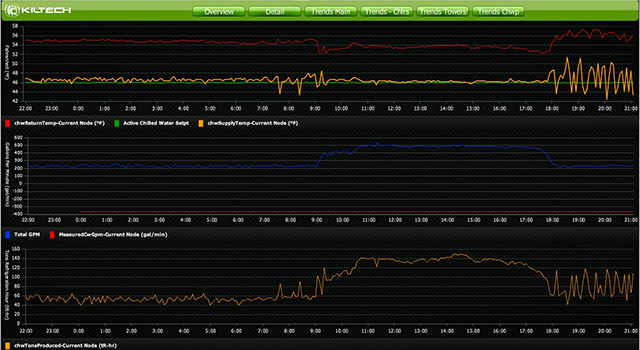U.S. Department of Defense, ESTCP
The Environmental Security Technology Certification Program (ESTCP) is a program within the DoD that was established to promote the transfer of technologies that have successfully proven to be cost-effective, innovative, and that meet the DoD’s high-priority environmental needs. The projects are conducted at DoD facilities and the results are well documented throughout the entirety of the demonstration to ensure that the technologies have a real impact and that the technology can easily be transferred.
Click here to view our project.

These Environmental Security Technology Certification Program projects demonstrate the increased energy efficiency and reduced energy consumption of unitary direct expansion (DX) air conditioners equipped with Advantek’s patented ClimaStat technology. Technology demonstration sites are Marine Corps Air Station Beaufort, South Carolina, and Naval Ordinance Test Unit, Cape Canaveral Air Force Station - Patrick Air Force Base, Florida. ClimaStat is a refrigeration-science technology that is factory installed in new air conditioning equipment as well as field-retrofitted to existing equipment. The technology is based on a new paradigm for control of major elements of unitary HVAC equipment, including refrigerant management, compressor, cooling coil, and supply air fan. The project demonstrates the life-cycle cost benefits of ClimaStat technology in both installed and new unitary HVAC systems and (2) documented energy savings of 20% along with significant indoor air quality improvements. Additional benefits are longer HVAC compressor life due to reduced refrigerant temperatures and operating hours. Energy use reductions of up to 60% can be realized in systems utilizing reheat for humidity or temperature control.

In 2011 Advantek began work on an Environmental Security Technology Certification Program with the Department of Defense installing Advantek’s patented ClimaStat technology at selected military installations. The project successfully demonstrated Climastat’s ability to raise the energy efficiency of DX package systems, reduce annual energy consumption and costs, provide a measurable improvement in indoor air quality, operate without adverse maintenance effects, and prove it is cost effective.
Commercial unitary HVAC systems are used to cool approximately half of all commercial building space and are estimated to consume 0.74 quads of energy annually. Most military installations also use such unitary HVAC systems to cool many buildings and mobile applications. The objective of this project was to demonstrate the increased energy efficiency and reduced energy consumption of unitary direct expansion (DX) air conditioners equipped with ClimaStat technology.
Rigorously instrumented demonstrations of two dual-compressor unitary systems were completed at the Marine Corps Air Station - Beaufort, South Carolina (MCASB) and at Cape Canaveral Air Force Station (CCAFS), Florida. The MCASB demonstration was a retrofit of ClimaStat to a 20-ton unit installed in 2003. The CCAFS demonstration was a new 8-ton unit with humidity control, to which ClimaStat was added after collecting baseline operation data. ClimaStat reduced energy consumption by an average of 21% relative to the baseline equipment. The technology also enhanced the capability of the equipment to meet dehumidification needs independent of sensible load. In addition, compressor operation was significantly cooler with ClimaStat technology installed, which likely results in longer compressor life as well as sustainability of improved efficiency.
A thorough life-cycle cost analysis shows a payback period of 2.6 years (new unit) to 4.0 years (field retrofit). Incremental cost ranges from 20% to factory-equip a new 8-ton unit with ClimaStat to 50% of the cost of a new unit for refurbishment / retrofit of an existing 20-ton unit. ClimaStat cost per ton drops significantly as system size increases, for example, the cost per ton for retrofit of a 20-ton unit is about one-third that of a 5-ton unit.
Two types of comparisons were made: (1) ClimaStat-measured IEER versus factory rating; and, (2) ClimaStat-measured IEER versus measured baselines. The range of improvement stems from whether the equipment modification was a retrofit of an existing air-conditioner unit, or an add-on to new unit; both scenarios were demonstrated. The percent IEER improvement is also affected by cooling load characteristics of conditioned space and condition of the existing unit.
At MCASB the ClimaStat-fitted unit efficiency is 20% improved over the standard unit factory rating, from IEER 11.2 to IEER 13.4. ClimaStat showed a 43% reduction in annual energy use relative to the baseline at this site.
At CCAFS there was a substantial reduction in reheat energy needed for dehumidification, accounting for 20% of baseline system energy use and nearly eliminating the need for electric reheat. While providing this reheat energy savings, the ClimaStat unit also showed a 27% increase in cooling energy efficiency during humid-season operation, and a 24% reduction in annual energy use relative to the baseline.
Indoor air quality was compared pre- and post- implementation of ClimaStat technology using multiple criteria addressing temperature, humidity, carbon-dioxide, and comfort. Ventilation was acceptable according to ASHRAE Standard 62 defined CO2 level 100% of the time at both sites. Dissatisfaction with comfort level was less than 1% of the time: 0.5% warm and 0.4%.
 E-mail
E-mail